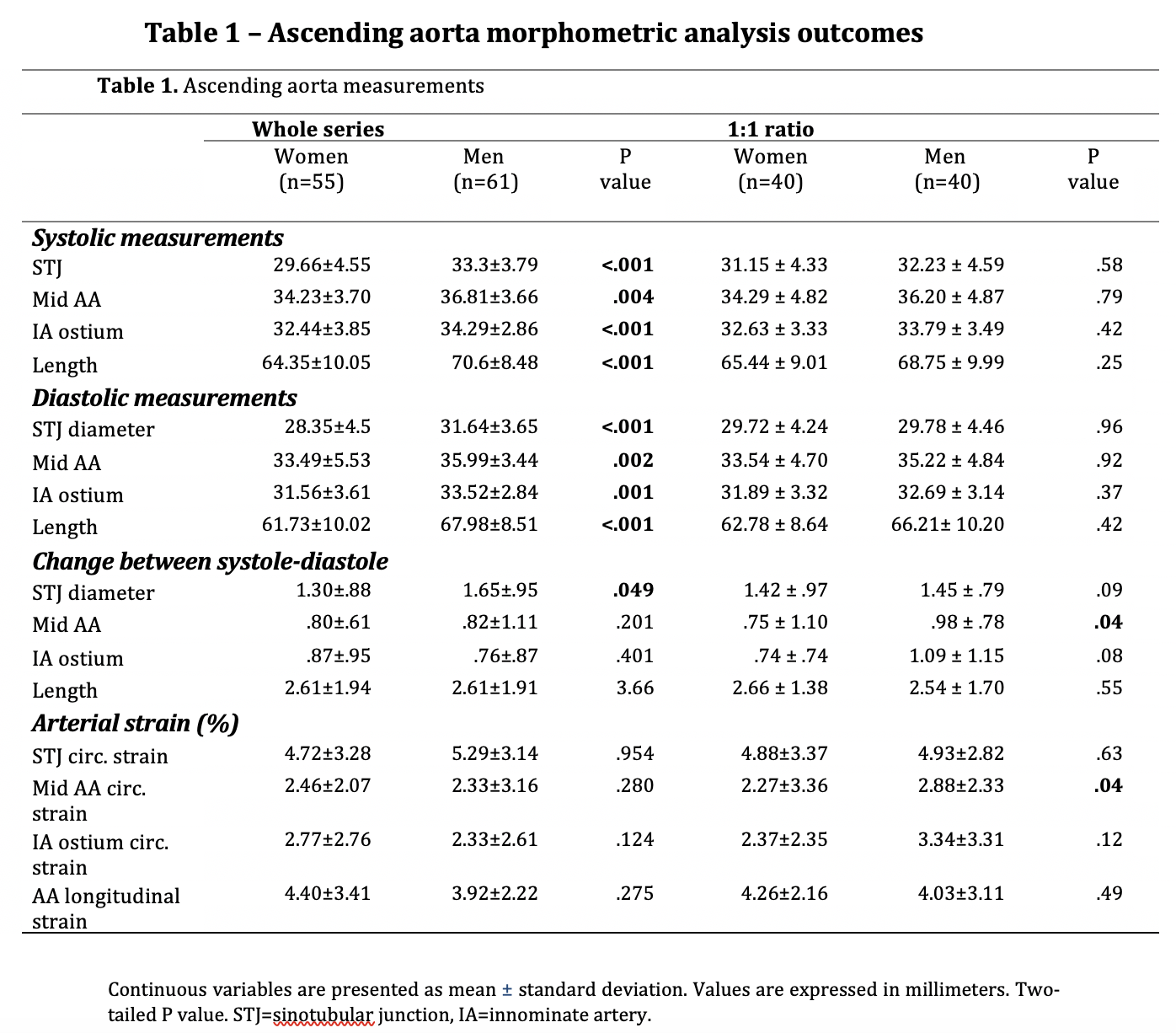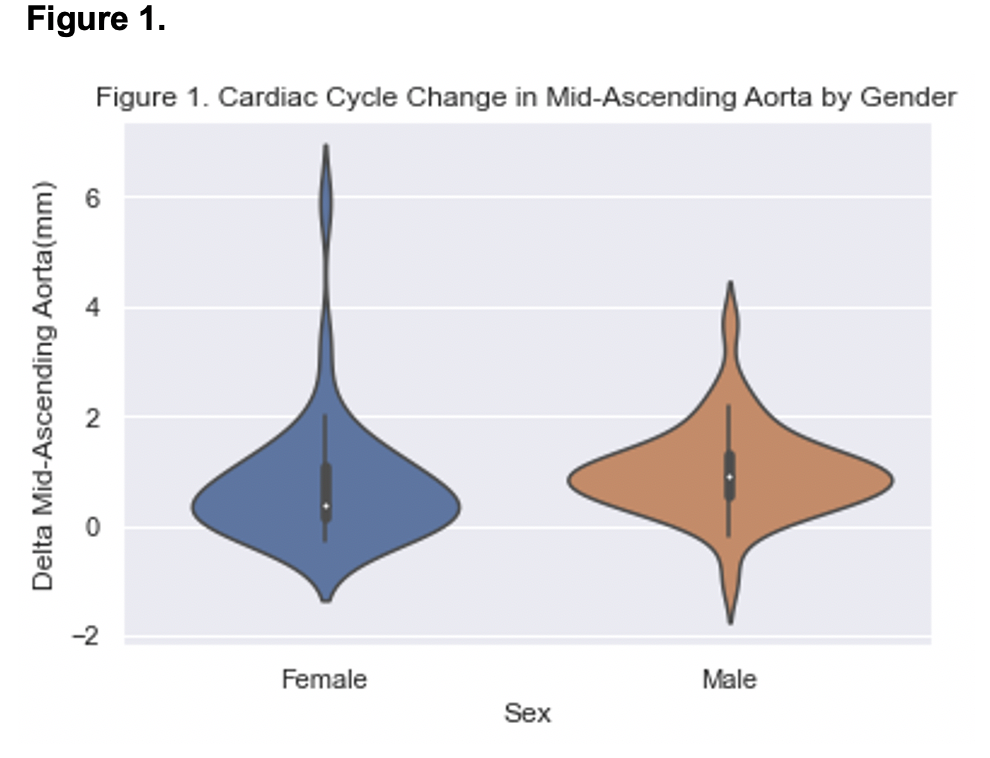Gender Specific Morphometric Analysis Of The Ascending Aorta Based On Ecg Gated Computed Tomography Scans: A Propensity Score Matching Approach
Maria Katsarou1, Viony M. Belvroy1, Mujeeb Zubair1, Santi Trimarchi2, Jean Bismuth1.
1Houston Methodist Hospital, Houston, TX, USA, 2University of Milan, Milan, Italy.
OBJECTIVES: Morphometric analysis is necessary for planning endovascular procedures on the ascending aorta. Several studies have demonstrated gender differences with respect to arterial size. Moreover, aortic diameter varies significantly between the systolic and diastolic phase of the cardiac cycle. The primary endpoint of this study was to verify the presence of morphometric variability between genders. The secondary endpoint was to determine gender-specific morphometric differences during the cardiac cycle.
METHODS: Electrocardiogram-gated cardiac computed tomography from 116 patients who were evaluated for transcatheter aortic valve replacement were retrospectively reviewed. Measurements of the ascending aorta were made in multiplanar views perpendicular to the semi automatically computed centerline according to a previously published protocol (2). Propensity-modeling techniques were used to investigate whether gender influences aortic morphology. Comparisons were made among the propensity-matched women and men.
RESULTS: Propensity score matching identified 40 pairs (caliper 0.2 SD). Systolic and diastolic mean diameters at the sinotubular junction, mid-ascending aorta, proximal to the innominate artery ostium and ascending aortic length did not differ significantly between females and males (Table 1). The difference in diameter between systolic and diastolic phase was statistically significant only for the mid-ascending aorta when compared between the two groups (.75±1.1 vs .98± 0.78, p .04) (Figure 1).
CONCLUSIONS: Our analysis demonstrated slight differences in the anatomy of the ascending aorta between genders, that were not however statistically significant. This finding suggests that small ascending aorta diameter and short length might not be prohibitive factors when planning an endovascular repair for female patients. 

Back to 2022 ePosters
